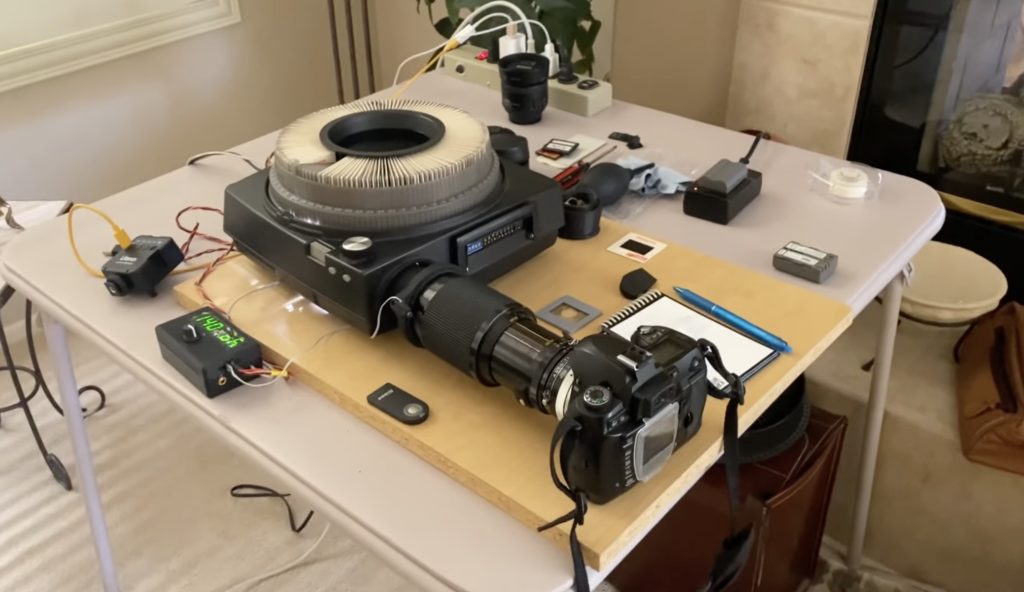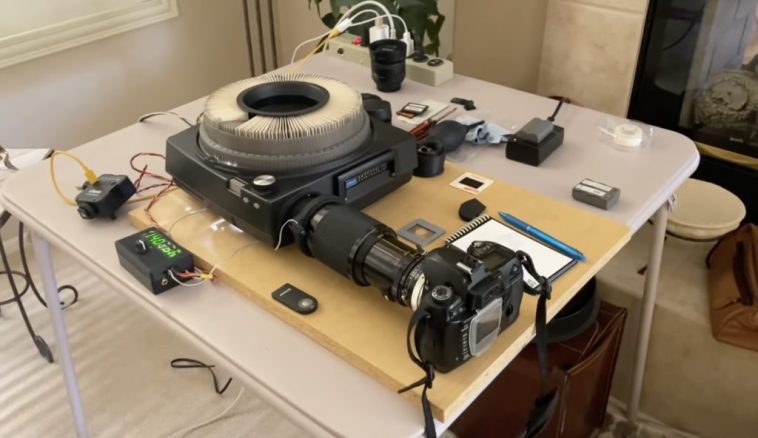
Until the proliferation of digital photography, film slides were a common way to share photos. After a nice vacation in the ‘70s, you might take your film rolls for development and would have the option to receive a set of slides. You could then gather all of your friends in your living room, pop those slides into a projector carousel, and force everyone to look at unfocused pictures of palm trees projected onto the wall. If you still have a collection of slides (or inherited your parents’ collection), this video from Scott Lawrence demonstrates one method for converting them to digital photos.
This approach might seem rudimentary, but it is quite effective. If you look at it from a high level, it is essentially just snapping photos of the slides with a modern DSLR camera. But those cameras are capable of capturing very high-quality pictures and this process is easy to automate. The key to that automation is the use of a vintage slide carousel. They are affordable and easy to control with a microcontroller, which makes them perfect for this application.
In this case, Lawrence used an Arduino Leonardo board. It controls two things: the slide carousel and the camera’s shutter. The user interface, made with a six-digit seven-segment display and a rotary encoder, lets the operator setup the number of slides to capture, the pause between slides, backlight brightness, and so on. When activated, the controller tells the carousel to load a slide, triggers the camera’s shutter, and then repeats with the next slide. Each slide only takes a few seconds to load and capture, which means this can digitize more than a thousand slides per hour.
The post Digitize your old slides with a modern DSLR camera appeared first on Arduino Blog.
Website: LINK


